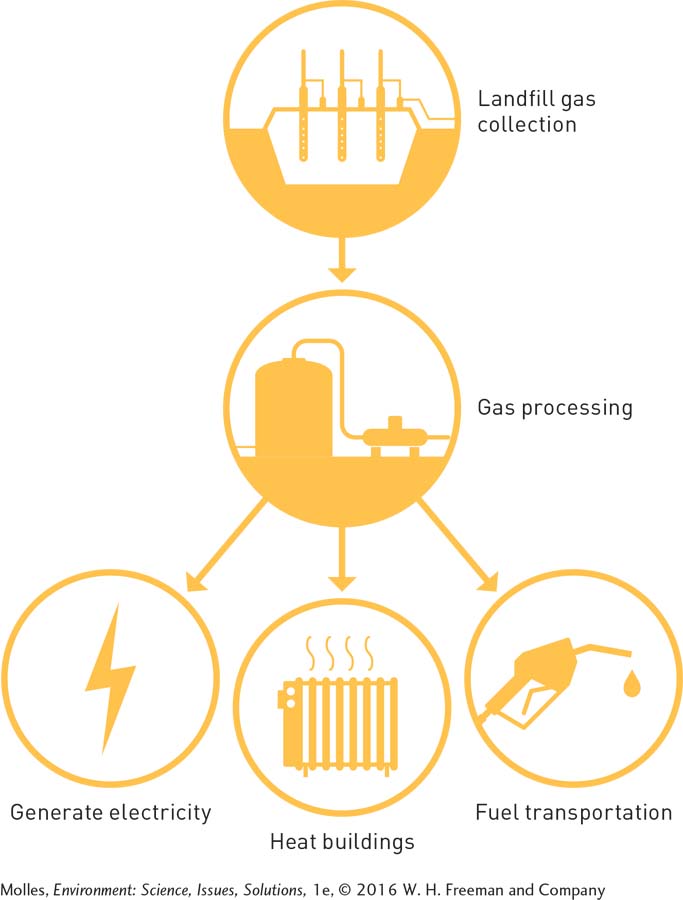12.8 Food waste and other biodegradable trash can be reduced and repurposed

How long could 220 pounds of food feed you personally?
According to the EPA, in 2013, Americans threw away 35 million tons of food. That’s over 100 kilograms (220 pounds) of food for every person in the country. Therefore, it is imperative that we find alternative uses for nutrient-
Reducing Food Waste
Several non-
In the developed world, however, food waste occurs primarily among end users, restaurants, and residences. For instance, a restaurant may stock too much of a perishable ingredient, which can’t be used in its entirety before spoiling. Preventing such problems requires making a periodic “dumpster dive” and seeing what ingredients are consistently getting thrown out. Of course, it’s not always possible to run a business—
Composting
composting A process involving aerobic decomposition of organic material used to recycle garden waste and organic components of municipal solid waste.
Rather than dumping food scraps and yard waste in landfills, such material can be composted. Composting is a method for returning the nutrients found in organic matter back to the environment, using processes that mimic the natural biogeochemical cycling of matter. The process involves naturally occurring bacteria, fungi, and invertebrates that gradually break down organic wastes into “compost,” a dark-
An example of an effective composting program is found in the sanitation system of San Francisco, California. This city has a food scrap collection program in areas with high numbers of restaurants. The food waste is collected in special bins every week by garbage trucks in a separate run. The waste is delivered to a facility that grinds and mixes it, then places it in huge black plastic bags for about 2 months. Once the composting process is complete, the “black gold” is delivered to farms and wineries throughout the state, where it is used as organic fertilizer. San Francisco’s composting system mimics the nutrient cycles found within nature and does an effective job of preventing this biodegradable waste from entering landfills. Home gardeners can also compost in their own backyards, layering food waste from the kitchen with leaves and sawdust and turning it periodically.
Turning Decomposing Waste into Energy
anaerobic An environment without molecular oxygen (O2?).
When organic material such as food waste ends up in landfills, naturally occurring bacteria gradually break it down. However, landfills are largely anaerobic, meaning very little oxygen is available. Therefore, the bulk of decomposer organisms found in landfills are anaerobic bacteria. In this anaerobic environment, bacteria produce methane (see Chapter 2, page 36) as a waste product—
Increasingly, landfills have systems that collect emerging gas to reduce their emissions of methane, which can be used as an energy source. The level of treatment needed for landfill gas depends on the intended use. Direct use of landfill gas to heat boilers and kilns generally requires only primary treatment, which removes moisture, particulates, and the trace amounts of sulfur dioxide generally present (Figure 12.19). Because primary-


How could you reduce food waste in your home?
Think About It
What are some other beneficial uses for food waste?
Why is the methane emitted by landfills now considered a valuable resource?